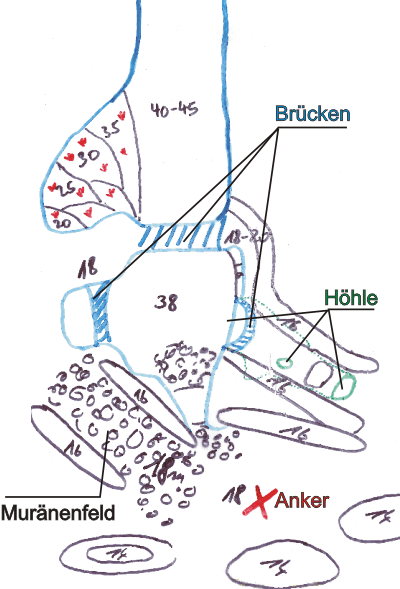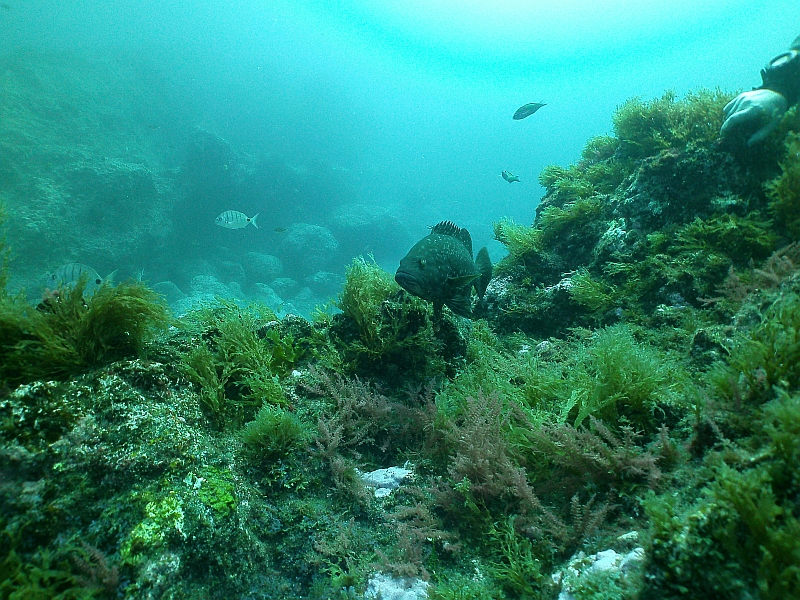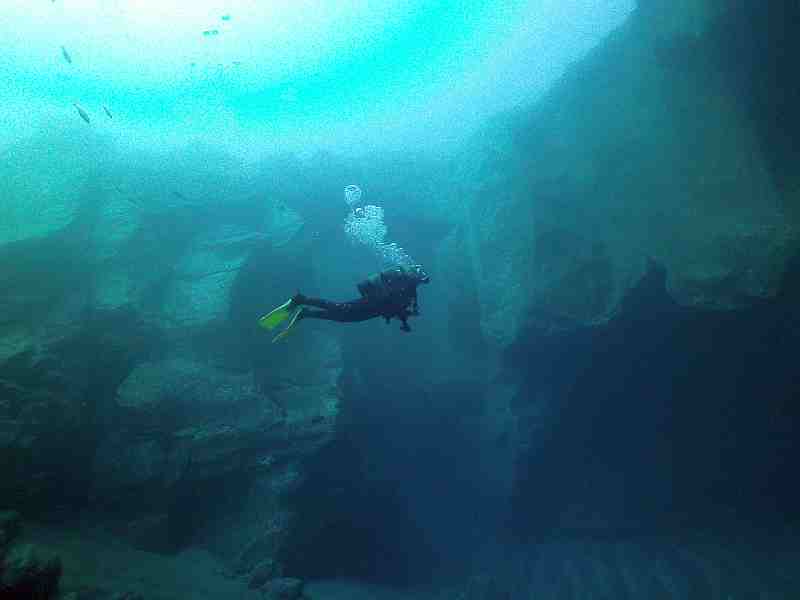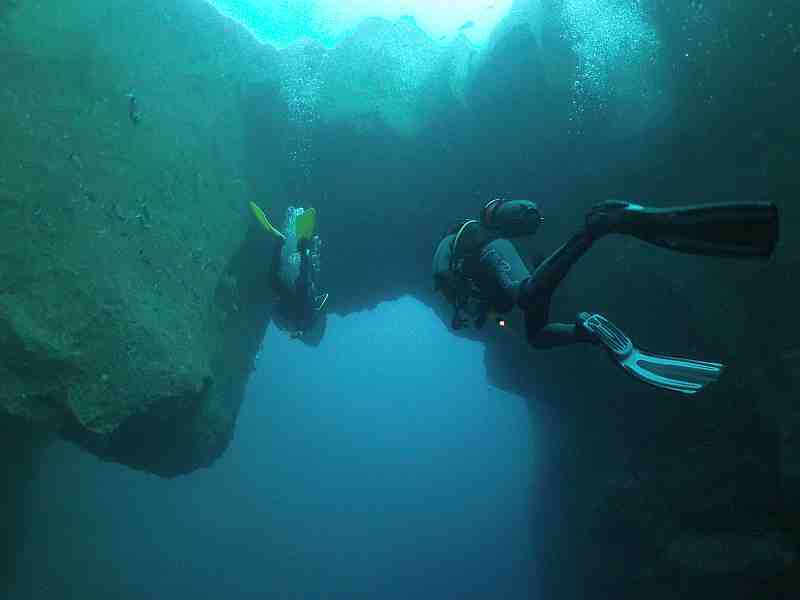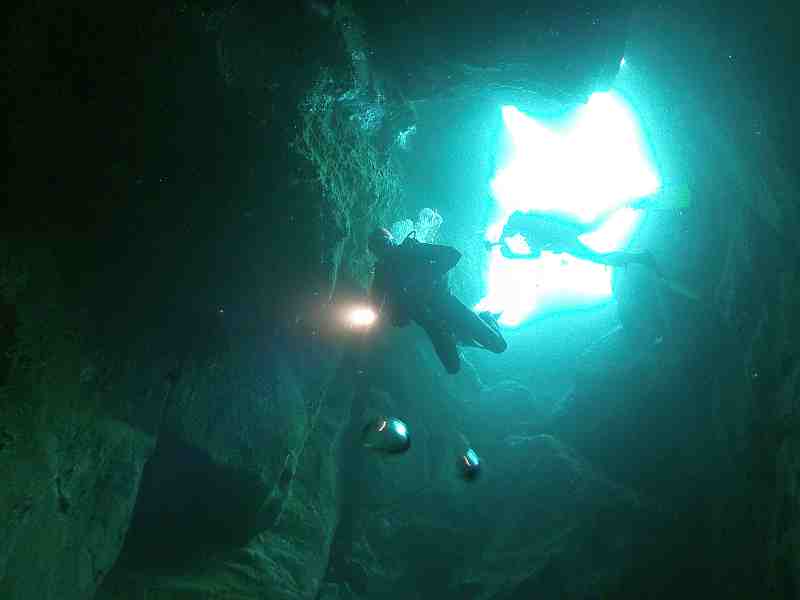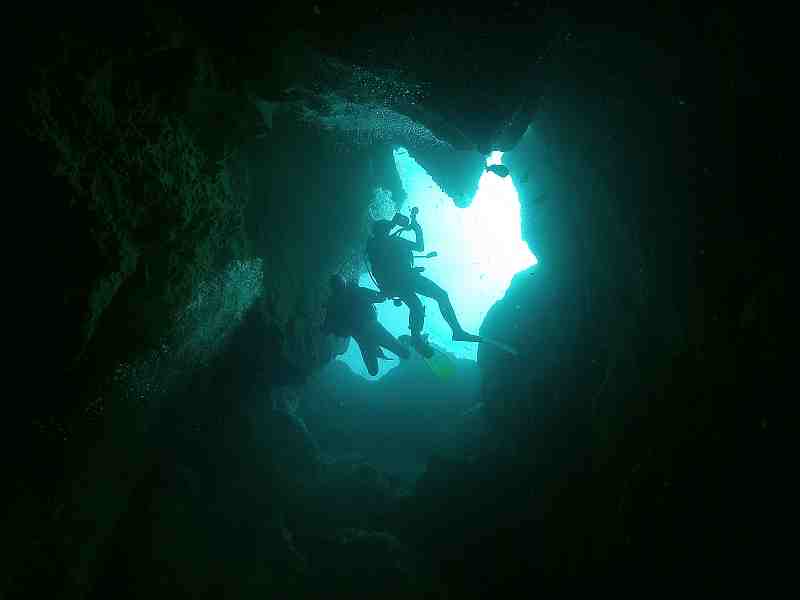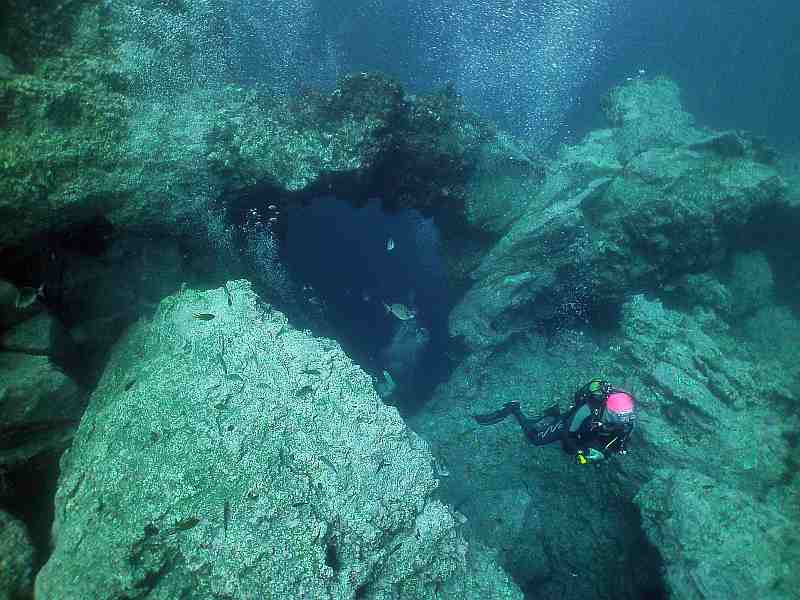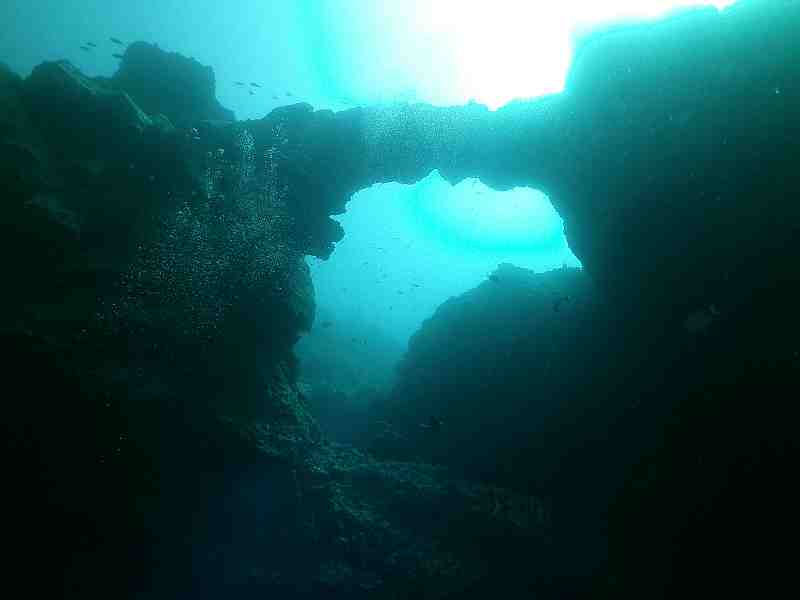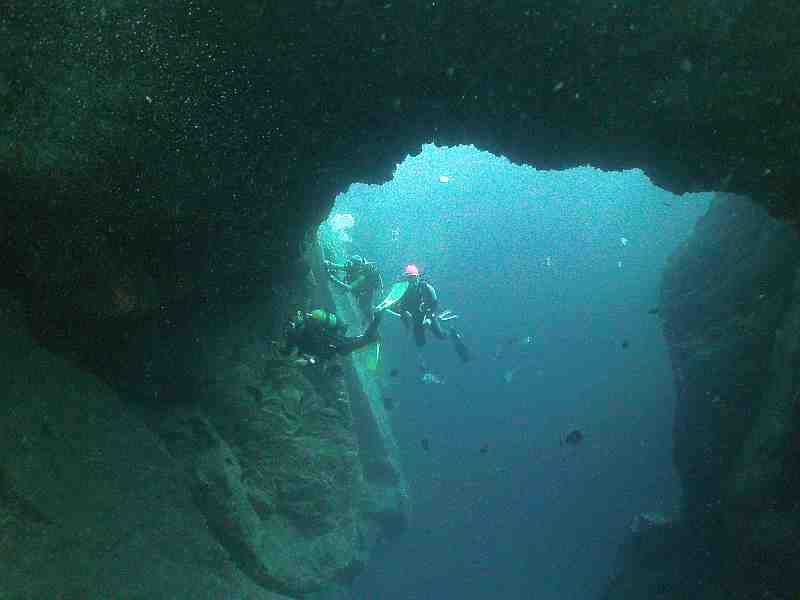Type of Dive
![]() Boat Dive
Boat Dive
Travel time: 10 min
Site suitable for
Beginner
Advanced divers
Ambitious divers
Depths
Anchor depth : 16m
Max. depth : 38m
Terrain
The "Labyrinth" dive site is one of the most spectacular and well-known dive sites in Tenerife. We discovered and named this dive site back in 1994. Due to an author's error in a Spanish dive guide, the "Labyrinth" dive site is mistakenly referred to as "La Cathedral" by Spanish and English dive centers. However, since we have discovered and named all the dive sites in the north, this is incorrect; this dive site is not the true cathedral.
This dive site is located at the end of a huge canyon. The anchor depth is only 18 meters, so this site is also suitable for beginners. However, they can only dive on the upper reef. Entry into the cave and labyrinth system below the reef is closed to all beginners. (Safety first, and we adhere to the standards set by diving organizations!)
The cave below the reef platform has two openings leading upwards. We descend into the cave system through the larger of these openings. It's not dark inside the cave, as light streams in through the openings in the ceiling. At the bottom of the cave, there's another exit at a depth of 32 meters, which leads directly back into the large canyon.
The three bridges that span the canyon on three sides are also fascinating. At the end of the dive, we pass the scree field at a depth of 18 meters, which is home to so many moray eels that we call it "Moray City."
For all beginners who would like to dive through the cave down into the canyon, we highly recommend the PADI Advanced Open Water course. As an Advanced Diver, we would be happy to take you here and through the cave down into the canyon.
The drive to this dive site is only 10 minutes. The advantage of this site is that it can be dived even during moon phases with strong currents, because once you're down in the volcanic labyrinth, you're protected from any current.
Flora & Fauna
Moray eels of all kinds, bream, sardines, eight-striped grunts, glasseyes, barracudas, sponges, and gorgonians. We're also increasingly encountering rays here.
Video
Map
